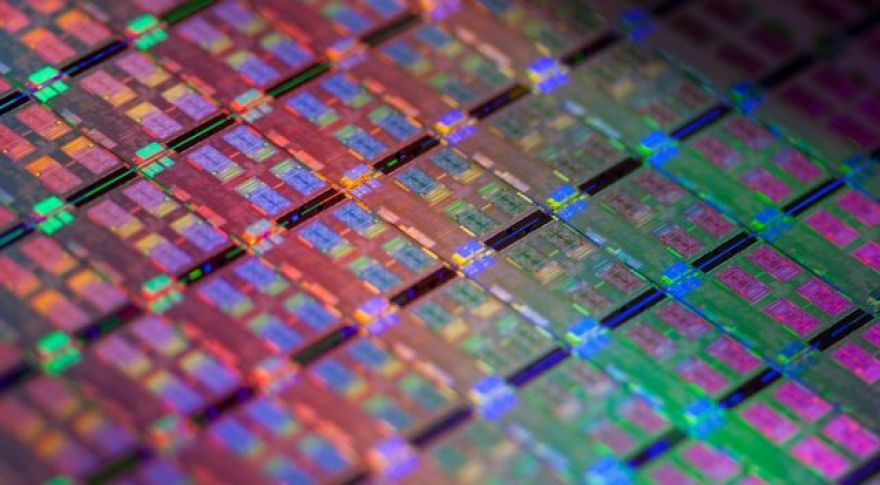
Intel’s Latest Microcode Update Doc Leaks Upcoming 9th Generation CPUs
When Intel announced its 10nm process node would be delayed into 2019 — and possibly into later 2019 at that — it punched some significant holes into the company’s product line that are still being sorted out. There’s now evidence that the shakeup could even impact how the company’s 9th generation CPUs are classified and where they fit into the overall product stack.
Tech Report Intel’s documented slip-up, and it’s well that they did — the company has since updated its own microcode document and removed the reference to 9th generation CPUs that it previously showed. Here’s the document as it originally appeared:
Image by .
Note the sizeable number of new 9xxx CPUs listed under “Coffee Lake S (6+2)” and the same Core i3-9xxx CPUs under “Coffee Lake S (4+2).” It also lists CPUs like the Core i5-8650K, which have never technically launched, and it omits the just-launched Core i7-8086K, presumably by accident (We’ve reached out to Intel for clarification on this point).
Our guess is that the Core i5 mentions above weren’t meant to be included in the document at all, but they don’t necessarily tell us anything we didn’t already know. Under Tick-Tock, Intel’s “generation” moniker had a meaning, even if the actual performance and power improvements of any given generation weren’t necessarily all that large. Ivy Bridge was a 22nm die shrink and the first Intel CPU to use FinFETs. Haswell refined IVB’s architecture and added a fully on-die voltage regulator (FIVR). Broadwell was a 14nm shrink, and Skylake added its own architectural refinements and ditched the FIVR Haswell had used. And post-Skylake in 2015? Well… not much. Kaby Lake (7th Generation) could’ve been folded into Skylake as a higher set of model numbers, had Intel wanted to do it. Coffee Lake is still a Skylake-derived CPU, just with additional cores and process node refinements.
There is one interesting implication of the fact that no new Core i7 CPUs were listed under the 6+2 moniker, while a number of Core i5s are. There’s been a rumor in the industry that Intel might be preparing to release eight-core Core i7 CPUs . Intel obviously knew for quite some time that its 10nm process wasn’t yielding up to desired specifications and could have planned an eight-core 14nm CPU for desktop as a potential response.
There are several reasons why the company might take this step. First, it puts them on an even core-for-core footing with AMD. Right now, AMD’s has ExtremeTech’s nod over the Core i7-8700K, precisely because two more cores give the CPU the headroom it needs to take the multi-processing lead over Intel. Second, bumping up core counts lets Intel keep talking up the efficiency of its 14nm process. If you’ve paid any attention to the company’s messaging around 14nm in the wake of the 10nm delay, it’s talked up how it delivered a 70 percent performance improvement over the life of 14nm to date. Most of that improvement arrived in mobile, courtesy of a shift from high-clock dual-core parts to lower-clocked quad-cores. We think there’s basically no chance of 15W six-core CPUs in mobile, but Intel could drop an eight-core desktop chip into the same TDP brackets it uses now and claim a performance and efficiency improvement as a result.
Third, bumping up core counts in mainstream desktop gives Intel reason to trim prices overall and talk up its own improved value as opposed to looking weak by cutting prices in response to AMD. We’ve already talked about how AMD’s 32-core Threadripper is virtually certain to force Intel to slash its own core counts. If it doesn’t, it’ll be putting an 18-core chip at $2000 up against a 32-core CPU at a presumed MSRP of $2000 – $2500. That’s not going to end well for Intel. But if eight-core CPUs go mainstream, the company can trim the entire rest of its stack accordingly.
All of this is speculation based on what was clearly information Intel didn’t intend to include in this presentation, combined with some rumors from earlier in the year, so I wouldn’t hang much weight on it — and it’s my theory. But given the competitive pressure on Intel this year, this kind of shift would make sense.